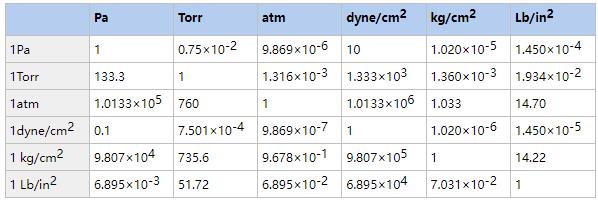It is said that the Italian Torricelli (1643) was the first person to create a vacuum. He inverted a glass tube filled with mercury in a plate filled with mercury. The gap created above the mercury column in the glass tube was a vacuum.
Although this was a convincing experiment at the time, we now know that the voids inside the tube are not actually empty, but contain many gases such as mercury vapor and water vapor. Even with today's advanced technology, it is difficult to create a true vacuum that is completely empty.
The degree of vacuum is expressed by the force (pressure) per unit area, and the unit is Pascal (Pascal). This is N/m2 (Newton/square meter) in the SI unit, which is a unit unique to vacuum and is taken from Pascal, who is famous for Pascal's principle.
The unit previously used was the Torr, which was derived from the vacuum created by Torricelli. In Torricelli's experiment, the height of the mercury column was 760mm and the cross-sectional area was 1cm2, so the pressure (vacuum degree) of 1 atmosphere was 760 Torr. Since the specific gravity of mercury is 13.6g/cm3, 13.6×76cm=1033.6g/cm2, the pressure per 1cm2 is slightly higher than 1kg.
In addition to Pa and Torr, pressure units include hectopascal and Lb/in2, which are very common in weather forecasts and atmospheric pressure. The relationship between these units is shown in [Table 1]. For example, 1Torr is 133.3Pa, which facilitates unit conversion.
[Table 1] Pressure unit conversion
 < /strong>
< /strong>






 WhatsApp: +8615857777578
WhatsApp: +8615857777578